Onchidella borealis Dall, 1871Common name(s): Leather limpet, Northwest Onchidella |
|
| Synonyms: |  |
| Phylum Mollusca
Class Gastropoda Subclass Gymnomorpha Order Onchidiacea Family Onchidellidae (In Kozloff's key is a choice in the Opisthobranch key) |
|
| Onchidella borealis, 11 mm long, crawls along a blade of sea lettuce. Found intertidally at Cape Flattery. | |
| (Photo by: Dave Cowles July 2007) | |
How to Distinguish from Similar Species: (The systematics and distribution of another species in the genus, O. carpenteri (Binney, 1860), are unclear)
Geographical Range: Alaska to San Luis Obispo county, California
Depth Range: Intertidal. This species spends considerable time above the water, especially in caves. This may be related to the fact that it has a lung instead of gills.
Habitat: Crevices, mussel beds, kelp holdfasts such as sea cabbage and Laminaria and red algae such as Odonthalia floccosa.
Biology/Natural
History: Often found
in as a group of several. Graze on diatoms from rocks and
algae at
low tide. On mechanical stimulation, the marginal tubercles
or papillae
produce
secretions that repel potential predators such as seastars, especially
Leptasterias
hexactis, which retreats from an
encounter. Hemigrapsus
nudus will eat dead individuals but not live
ones. Lays a
gelatinous mass of 6-40 encapsulated eggs. Hatch as young
juveniles.
| Return to: | |||
| Main Page | Alphabetic Index | Systematic Index | Glossary |
References:
Dichotomous Keys:Kozloff 1987, 1996
Smith and Carlton, 1975
General References:
Kozloff,
1993
Morris
et al., 1980
O'Clair
and O'Clair, 1998
Sept,
1999
Scientific Articles:
Young,
Craig M.,
Paul G. Greenwood, and Cynthia J. Powell, 1986. The
ecological
role of defensive secretions in the intertidal pulmonate Onchidella
borealis. Biological Bulletin 171: 391-404.
Web sites:
General Notes and Observations: Locations, abundances, unusual behaviors:
Although Kozloff's key says this species is abundant throughout the region I have not noted it often except on the open coast. Perhaps this is because it is inconspicuous and usually found in caves, crevices, and holdfasts. In the summer of 2013, however, it was common along the north shore of Whidbey Island (see below).
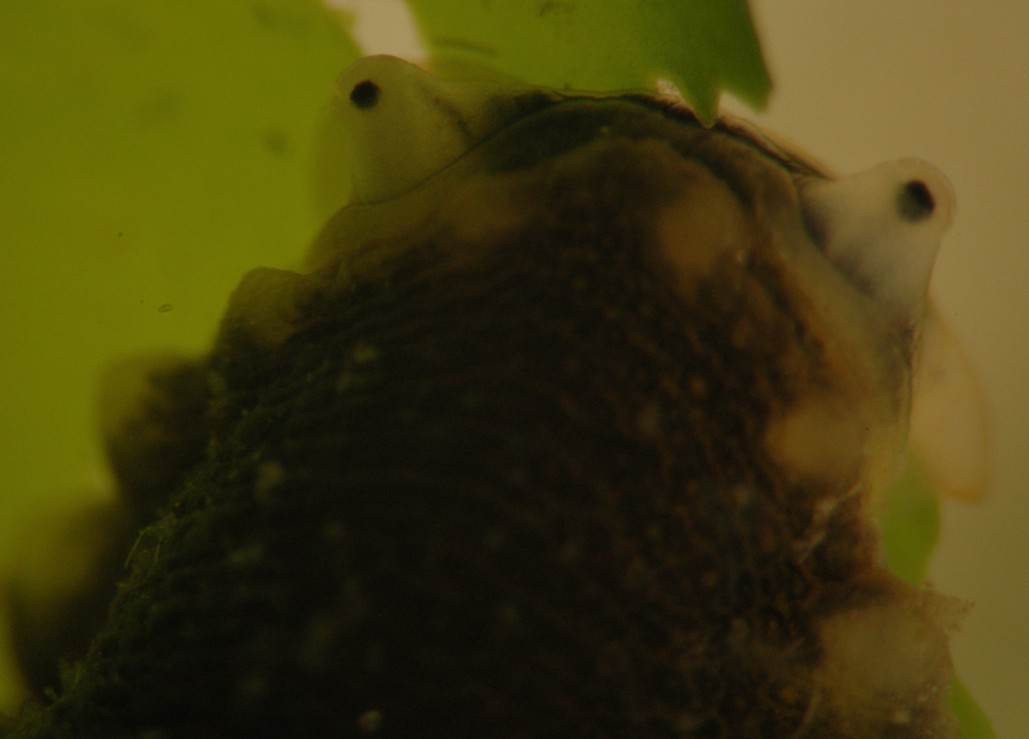
The eyes are on stalks or tentacles. The tubercles or
papillae
along the lateral margins of the dorsum, which secrete substances
noxious
to seastars, are also clearly visible.
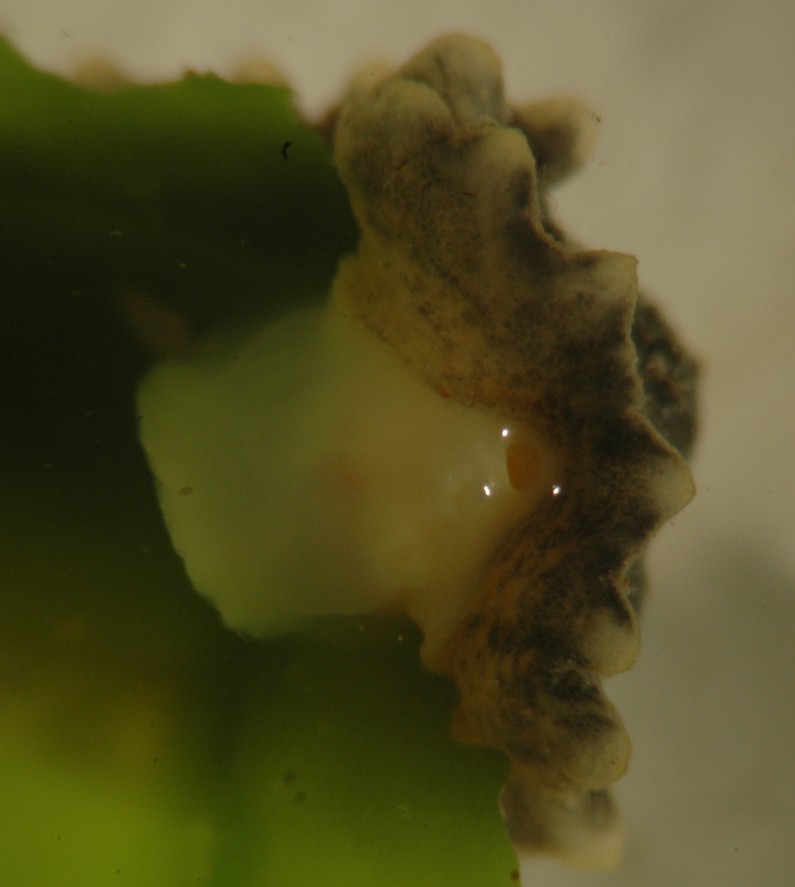 |
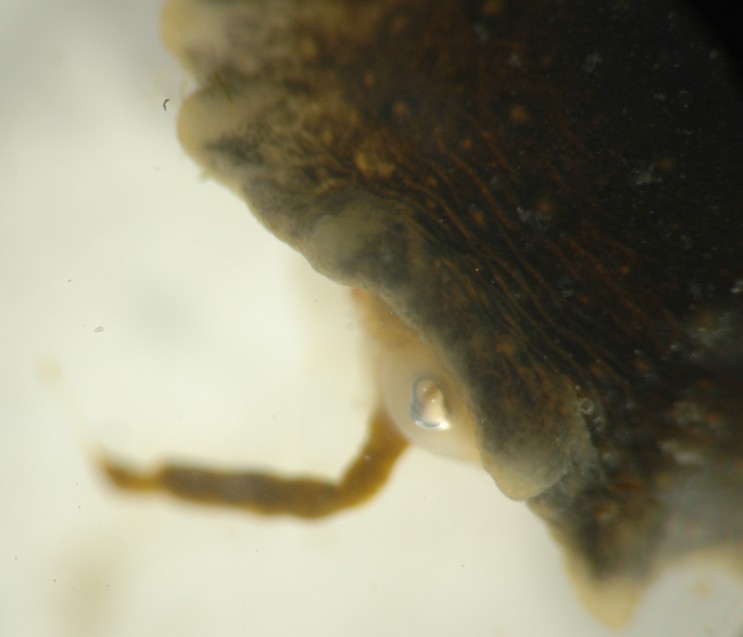 |
| Posterior view as the animal crawls under a blade of sea lettuce. Note the wide-open pneumostome and the less obvious anus just ventral (left) of it. | Dorsal view. The animal is defecating from the anus and a bubble is visible in the pneumostome. |
| These views show the pneumostome opening to the lung, which is located on the posterior end under the dorsal flap of the mantle and just dorsal/posterior to the anus. | |
Most years I have found this species only
occasionally. However,
in the summer of 2013 this species was very abundant on seaweed and
rocks
at North Beach and other beaches along the south margin of Deception
Pass,
Whidbey Island, WA just south of our marine station. The
photos below
are several taken by my daughter, Joanna Cowles, at North Beach in the
summer of 2013.
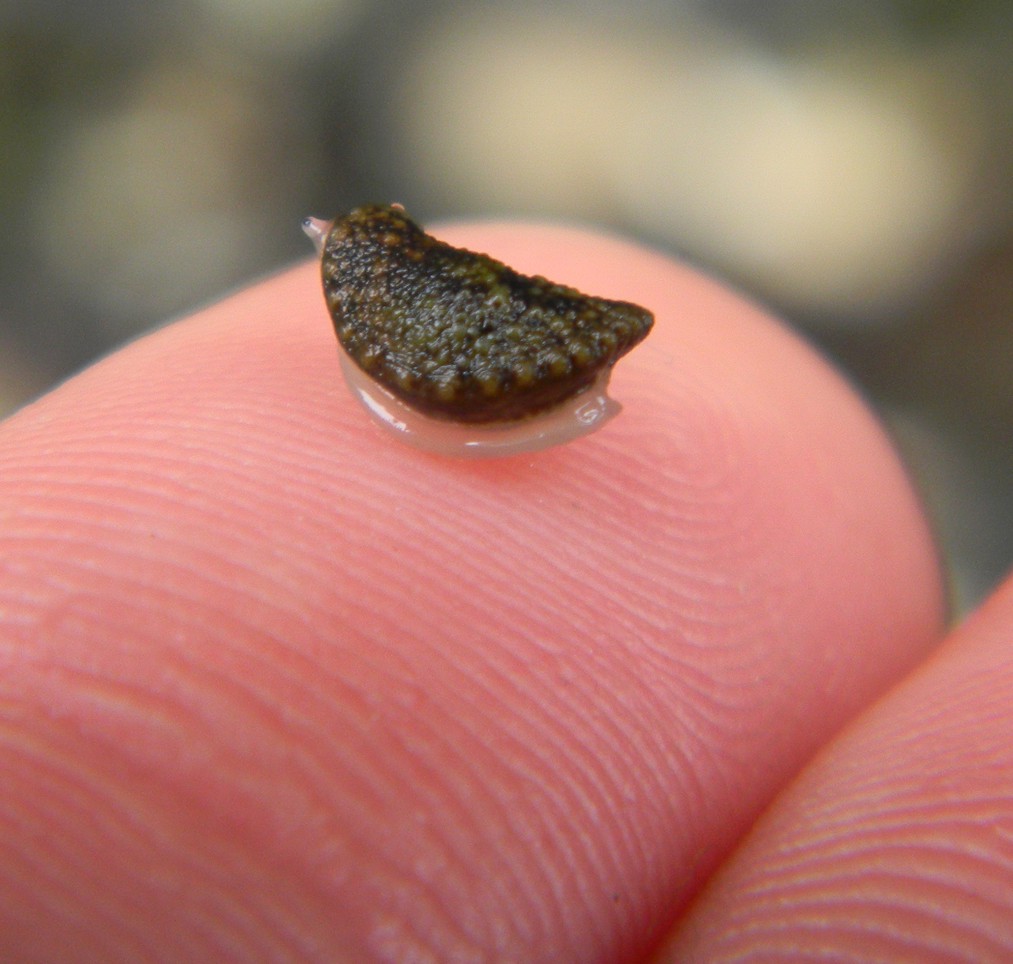 |
 |
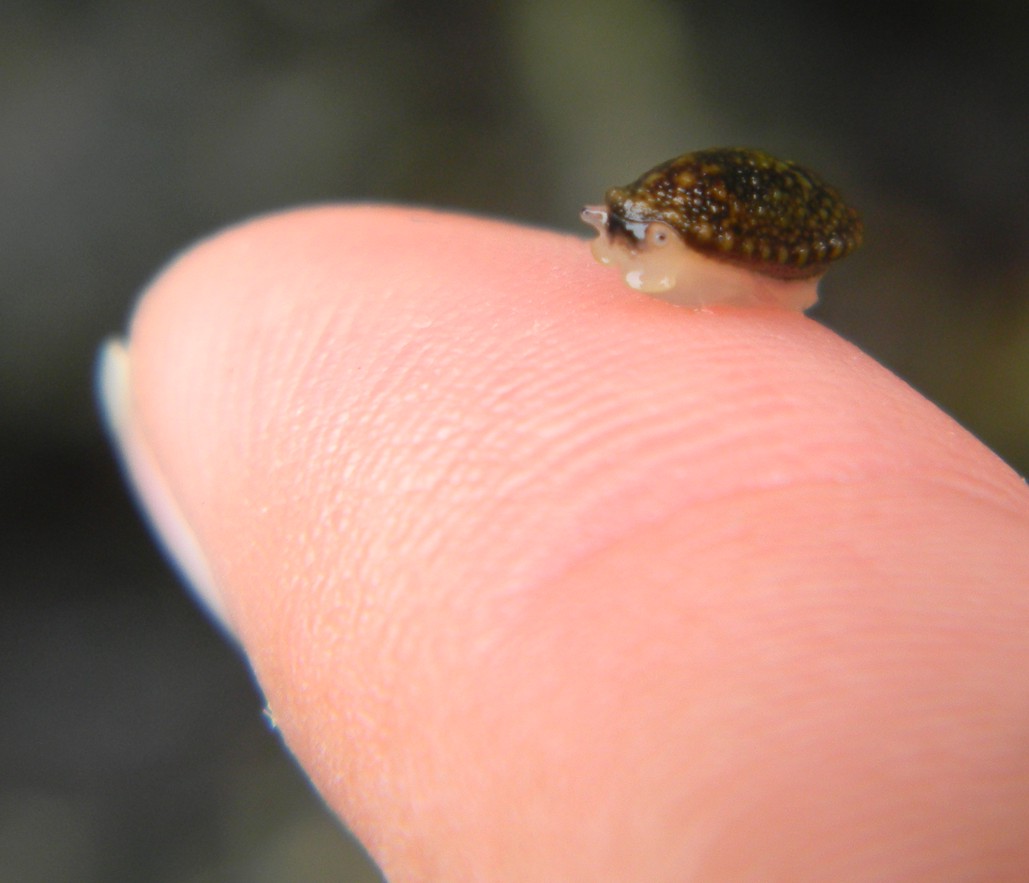 |
Authors and Editors of Page:
Dave Cowles (2007): Created original page